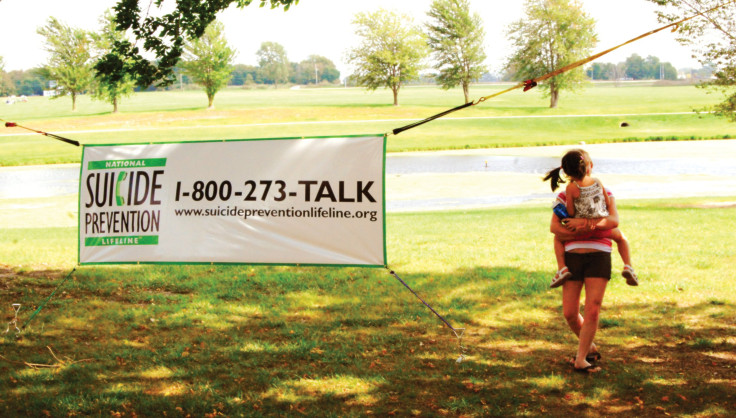Suicide Prevention Programs Reduced Suicide Attempts By 79,000 Over A 3-Year Period

Helping those who struggle with suicidal thoughts remains one of the more important public health issues in America today. Yet, with the limited resources available to us, it’s crucial that we’re putting the best foot forward when it comes to developing and implementing programs and interventions designed to prevent suicide.
Now, a new study in JAMA Psychiatry suggests that these efforts have not been for naught. Studying suicide attempt rates in over 1,500 counties across 46 states and 12 tribal communities, the authors found a significant association of decreased attempts among counties that contained federally-funded suicide prevention initiatives. All told, they roughly estimated that 79,000 suicide attempts by those aged 16 to 23 may have been avoided from 2008 to 2011 as a result of these programs.
In 2004, the US government signed into law the Garrett Lee Smith Memorial Act (GLSMA), the first piece of federal legislation intended to directly fund youth suicide prevention programs. Since then, millions in grants have been awarded to both state and tribal communities as well as to college campuses. Currently, there are 70 ongoing grants, 37 collegiate and 33 state and tribal.
That money has been funneled into a myriad of initiatives related to suicide prevention, from crisis hotlines to “training activities for child care professionals and community care providers on the latest youth suicide early intervention and prevention services practices and strategies.” according to a 2010 study on the larger GLS program.
While there’s been extensive data collected from these programs, measuring how effective they’ve been in the grander picture is a harder task. To remedy that, the current study authors sought to make a relatively simple comparison of attempt rates between areas that began GLS programs from 2006 to 2009 and areas that didn’t, cross-referencing with data taken from the National Survey on Drug Use and Health.
In total, they looked at 466 counties with GLS and 1161 without, making sure to match the background characteristics of each group as best they could. And they calculated that there were 4.9 fewer attempts per 1000 youths in the GLS counties in the year after these programs were implemented, leading to those 79,000 fewer attempts.
“These findings have significant implications for public health policy — specifically, suicide prevention programs and the ways to reduce morbidity and mortality associated with suicidal behaviors — and suggest that community-based programs (such as the GLS program) provide a pathway toward fewer suicide attempts and death,” they wrote.
Heartening as their findings are, they also reported that the GLS program didn’t appear to have any influence on the suicide attempt rates of people older than 23; nor was there a sustained longer-term difference in attempt rates. Given these grants only run for a short period of time, and are specifically focused on youth suicide prevention, that might not be so surprising. But it does indicate that we can’t rest on our laurels.”Sustained suicide prevention programming efforts may be needed to maintain the reduction in suicide attempt rates,” they concluded.
Source: Garraza L, Walrath C, Goldston D, et al. Effect of the Garrett Lee Smith Memorial Suicide Prevention Program on Suicide Attempts Among Youths. JAMA Psychiatry. 2015.



























